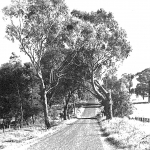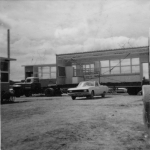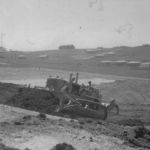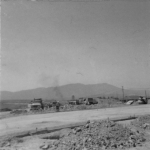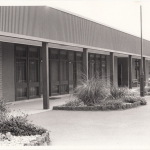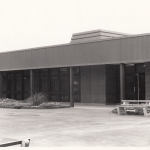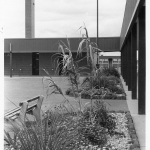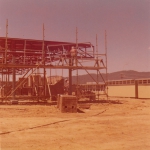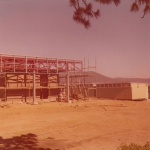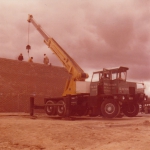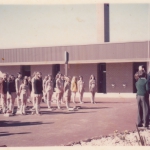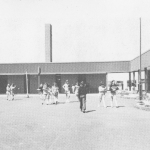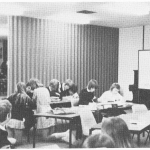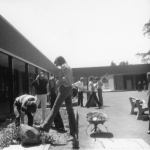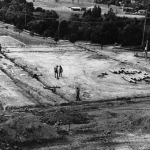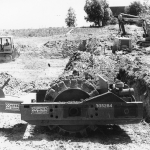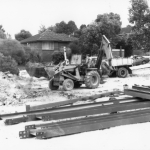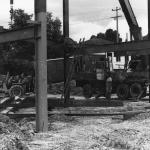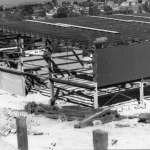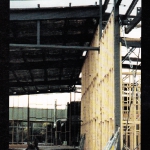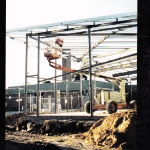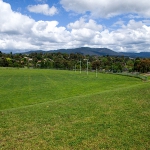College History
On Tuesday 6th February 1973, despite inclement weather, Mooroolbark High School opened with eighty-seven Form I students and six portable classrooms, but most of all with purpose and direction.
The continuing rapid growth in the immediate area meant that the existing schools could not cope with the rising number of students seeking to access high school education.
Mooroolbark High School was built in four major stages over ten years on a twenty-two and a half acre site, which not long before had been part of the local JP’s dairy farm. The new school consisted of two main courtyards bordered by four permanent blocks of classrooms, a library and an administration block.
From 87 original students, the number grew to 618 by 1977, the year the school first ran Form V with 64 students and staff of 37. The first Form VI class came into existence in 1979 when the student population reached 822 and the number of usable classrooms totalled 37. Fourteen subjects were offered. By 1983, in just ten years, the student population had rocketed to 955.
In October 1982, six years after completion of the main buildings, the ECA Centre and the school buildings were officially opened. In 1985, more than 200 students enrolled at Year 7 and there were 55 HSC students. Further improvements were made to the exterior of the buildings and in 1992 the southern quadrangle was developed as a passive recreation area. The year 1992 also saw the provision of a third computer laboratory and computerisation of the library system.
The 1990s saw a name change when Mooroolbark High School became Mooroolbark Heights Secondary College. In 1993, the school decided it would remain as a stand-alone Year 7-12 school, rather than merging to create a junior/senior mega-campus with two neighbouring schools. Along with the new name and decision to retain its individual status came a new logo and new uniform. Gone were the green and brown uniforms. Navy and bottle green took over as the school colours. The student population grew to nearly 1300.
A new technology wing was added to the college in 1999-2000 which, coupled with the department’s laptop program for teachers, ensured that the college was well equipped to handle the challenges of a rapidly developing technological world. The centre replaced many portables and cramped and dark rooms at the end of the Arts block with modern, open, well-resourced rooms, full of natural light.
With the College Charter providing the foundations on which the college moved forward, high standards, high expectations and success formed the building blocks for every program or initiative. With a dramatic rise in Year 7 numbers giving strong support to the new direction, the school became Mooroolbark College from the start of 2004.
During 2004, with six other outer eastern schools, the college was awarded a multi-million dollar grant as a leading school to develop an eLearning Community. The college also accessed the Innovation and Excellence Project that enabled our students and teachers to work closely with students and teachers from our local feeder primary schools, and thus the The Red Earth Cluster was formed.
In 2009 the school totally changed the role of the Houses from just groups for sport to a wider responsibility. Form Assemblies were replaced by Home Groups based on the Houses with a vertical structure of students from Years 7 to 12.
In 2011 an extremely successful iPad program was introduced into Year 7, and has continued to grow, teachers and students continuing to learn from each other. So successful has the iPad program been that Mooroolbark frequently hosted tours from other Melbourne schools who wanted to see how and why the school had been so successful with this new program.
In 2013, a new Year 12 study centre was opened for Year 12 students with the roofing over and fitting out of a large open space between a group of portables in X Block. Many Year 12 classes now run in nearby classrooms, and with its quiet working atmosphere in lesson times, large screen for announcements and quick access to the VCE and VCAL coordinators, it is an effective learning environment.
Principals
- 1973 – 1984 Jack Everson
- 1984 – 1992 Max Burgess
- 1992 – 1994 Russell Harrison (Acting Principal)
- 1994 – 2001 Graham Kingsland
- 2002 – 2007 Geoffrey Flett
- 2008 – 2015 Simon Reid
- 2016 – current Ann Stratford

